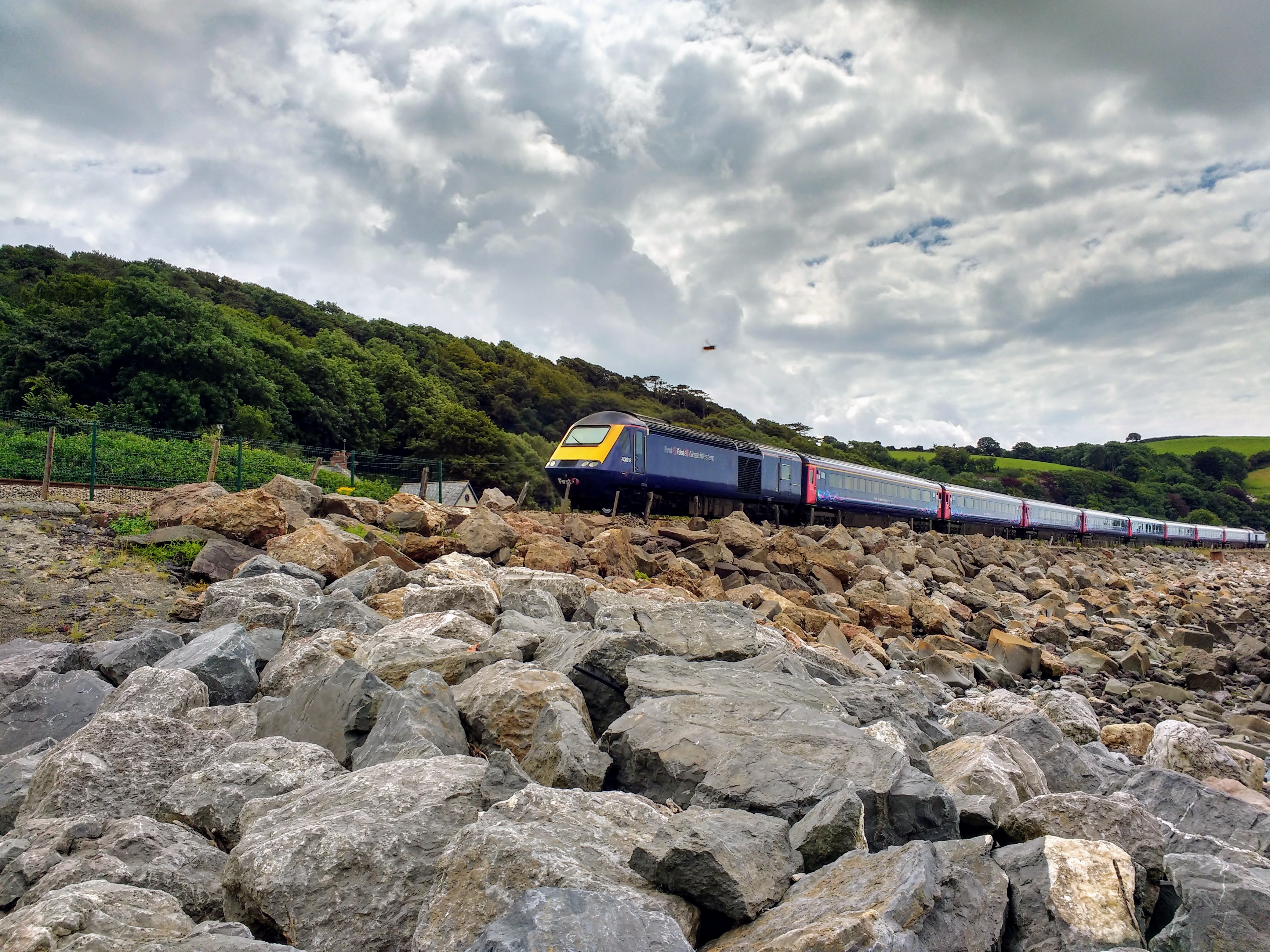
Train approaches Ferryside, Carmarthenshire, on the London to Carmarthen line.
When Britain’s railways were privatised in the 1990s, the plan was that passengers would benefit from competition. It didn’t really happen. 30 years on, and many major routes are still only served by one company.
But, belatedly, that most traditional of market forces is beginning to assert itself.
Independent company Grand Union proposes to take on the current franchisee GWR on the West Wales to London railway. If the government’s regulator, the Office of Rail and Road (ORR), approves its application, it could start services from Cardiff as early as May 2023, and from Carmarthen to London in 2025.
Currently GWR is the sole operator on the London Paddington to South Wales line. Grand Union wants to run trains to a shaken-up timetable, missing out stations and bypassing one of the biggest stops of all, Swansea, while stopping at new ones. The new service would offer an alternative to driving on the severely congested M4, by calling at three stations close to the motorway – although two of them have yet to be built.
If the company wins approval, it could mean significant acceleration on the line west of Cardiff, where timings have been positively pedestrian for many years. Currently passengers trains from Carmarthen and West Wales have to trundle into the terminus station in Wales’s second city, Swansea, and take a leisurely pause before reversing out and heading east. Grand Union proposes to save 20 minutes by bypassing the main station altogether. Instead it would take an existing line only used by freight trains and stop at a proposed park and ride station at Felindre on Swansea’s northern edge, close to junction 46 of the M4.
Until recently upstart services on the main lines out of London have not lasted long. One new operator with a future could be Lumo, which introduced the first serious alternative train service between Kings Cross and Edinburgh in 2021. And now Grand Union has applied for permission for a four train a day day service from Stirling to London Euston, missing out of Edinburgh and Glasgow, with a possible 2023 start.
Along with Lumo, Grand Union is proposing a new form of train service. “The current system of running railways in the UK needs to change,” it states on its website. “The standard, long running franchise model is no longer delivering for rail-users or taxpayers.’
One of its promises is a 50% refund to any passenger forced to stand. Another is that open tickets would be 25% cheaper than the current inter-available fares (available for any train) on the route. Regular travellers could buy a book of 10 discounted tickets for use in either direction between two points on the services. There will be “a good choice of catering and refreshments regardless of your ticket price”, free Wi-Fi to everybody, and “comfortable and much better seats, and more space and leg-room for passengers compared to other train providers”.
Another selling point will be a fast non-stop dash from Bristol Parkway to Paddington (re-creating the fast services that BR operated in the 1980s) – most GWR services stop at some or all stations in between. With a clever use of words, it boasts “Grand Union trains will cut the current average journey time between London and Cardiff by 20 minutes – similar to the average journey time saving offered by HS2 between London and Birmingham.”
But it is in drawing people away from the congested M4 in South Wales where innovators like Grand Union could make the biggest impact. In 2019 the Welsh government controversially cancelled a proposed £1.4 billion relief road around a notoriously congested stretch of the M4 at Newport. A commission was set up to propose other ways to break the jams which occur there, and for that matter all along the M4 and its continuation, the A48, as far as Carmarthen.
One obvious solution is to improve public transport, and build new stations. Grand Union wants to stop its trains at the new Cardiff Parkway station when it is built, and an expanded Severn Tunnel Junction. Both are close to the M4 and offer an alternative to driving. The proposed station at Felindre, also close to the M4 motorway, would have space for 500 cars.
Grand Union also wants to carry light and urgent freight, by utilising empty space in the non-passenger part of its trains, which could take some lorry and van traffic off the M4.
The final question is, do we need disruptive companies such as Grand Union to come into the market when, let’s face it, GWR does already offer plenty of services out of London to South Wales, on new fast trains? But it was GWR which actually withdrew one of the most famous trains of this line, the summer holidays service to Pembrokeshire, the train which ran from Victorian times until two years ago. Now you have to take the train to Swansea and change. GWR’s philosophy, along with most other franchisees, seems to be steady and reliable rather than innovative.
So will the Grand Union trains go ahead? The Welsh Government supports the proposal. Now it’s down to the Office of Rail and Road.
